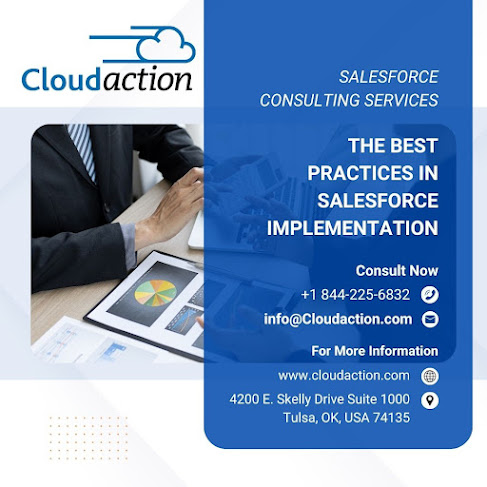The Best Practices in Salesforce Implementation
Salesforce, one of the leading CRM platforms, offers a robust suite of tools for businesses of all sizes. However, a successful Salesforce implementation requires careful planning and adherence to best practices to ensure that your organization gets the most value from the platform.
In this blog post, we will explore some
Salesforce implementation best practices by salesforce consulting
services that can help you maximize the benefits of this powerful
CRM solution.
Define Clear
Objectives and Goals
Before diving into Salesforce implementation,
it's essential to define your organization's specific objectives and goals.
What do you want to achieve with Salesforce? Are you looking to increase sales,
improve customer service, or streamline your marketing efforts? Having a clear
understanding of your goals will guide your implementation strategy and help
you tailor Salesforce to meet your unique needs.
Assemble a
Skilled Implementation Team
Salesforce implementation is a complex
process that involves multiple stakeholders, including executives,
administrators, developers, and end-users. Assemble a cross-functional team
with the necessary skills and expertise to ensure a successful implementation.
This team should include individuals who understand your business processes and
can translate them into Salesforce workflows.
Data Quality
and Migration
Data is the lifeblood of any CRM system.
Ensure that your existing data is clean, accurate, and up-to-date before
migrating it to Salesforce. Develop a data migration strategy that includes
data cleansing, mapping, and testing to prevent data integrity issues that can
plague your implementation.
Customize
Appropriately
Salesforce provides extensive customization
options to tailor the platform to your specific needs. However, it's essential
to strike a balance between customization and out-of-the-box functionality.
Over-customization can lead to complexity and maintenance challenges in the
long run. Focus on customizing where it adds significant value to your
processes.
Plan for
Scalability
Your organization is likely to grow and
evolve. Plan your Salesforce implementation with scalability in mind. Consider
future needs and design your system architecture and workflows to accommodate
growth seamlessly.
Conduct
Rigorous Testing
Thoroughly test your Salesforce
implementation before rolling it out to end-users. Test various scenarios,
workflows, and integrations to identify and address any issues or
inconsistencies. User acceptance testing (UAT) is critical to ensure that the
system meets the expectations of your end-users.
Provide
Ongoing Support and Maintenance
The implementation process doesn't end once
Salesforce is up and running. It's essential to establish ongoing support and
maintenance procedures to address issues, provide training updates, and keep
the system optimized for your changing needs.
Monitor and
Measure Performance
Regularly monitor and measure the performance
of your Salesforce implementation including salesforce
service cloud and sales cloud. Use key performance indicators
(KPIs) to assess the impact on your business objectives. Make data-driven
adjustments and improvements to maximize the value of your CRM investment
continually.



Comments
Post a Comment